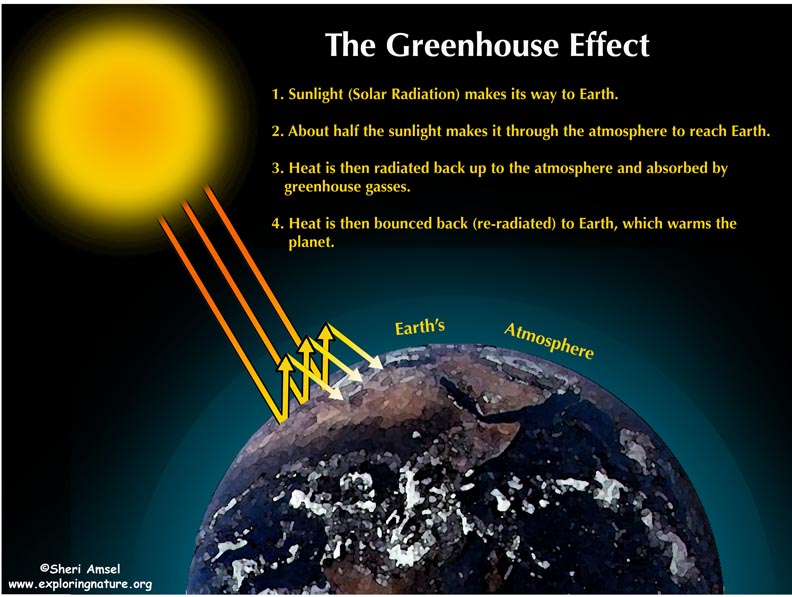

Sunlight (solar radiation) provides the energy and warmth that allows life on Earth. Yet, only about half the sunlight that reaches Earth gets through the atmosphere to the surface of the planet. That sunlight is absorbed by the oceans and land and then radiated back upward as heat. About 90% of this heat is absorbed by the greenhouse gasses in the atmosphere – water vapor, carbon dioxide, methane, nitrous oxide and oxygen. They then radiate the heat back to Earth which keeps the planet in a temperature range that supports life. This natural greenhouse effect is why life was able to develop on Earth.
1. What did this description of the Greenhouse Effect teach you about the importance of the atmosphere to our planet's temperature?
2. How do the greenhouse gasses play a role in the Earth's temperature?
3. Why do you think this is called the Greenhouse Effect?
4. Why might too many greenhouse gasses be a bad thing?
When you research information you must cite the reference. Citing for websites is different from citing from books, magazines and periodicals. The style of citing shown here is from the MLA Style Citations (Modern Language Association).
When citing a WEBSITE the general format is as follows.
Author Last Name, First Name(s). "Title: Subtitle of Part of Web Page, if appropriate." Title: Subtitle: Section of Page if appropriate. Sponsoring/Publishing Agency, If Given. Additional significant descriptive information. Date of Electronic Publication or other Date, such as Last Updated. Day Month Year of access < URL >.
Amsel, Sheri. "Greenhouse Effect" Exploring Nature Educational Resource ©2005-2024. December 14, 2024
< http://www.exploringnature.org/db/view/Greenhouse-Effect >
